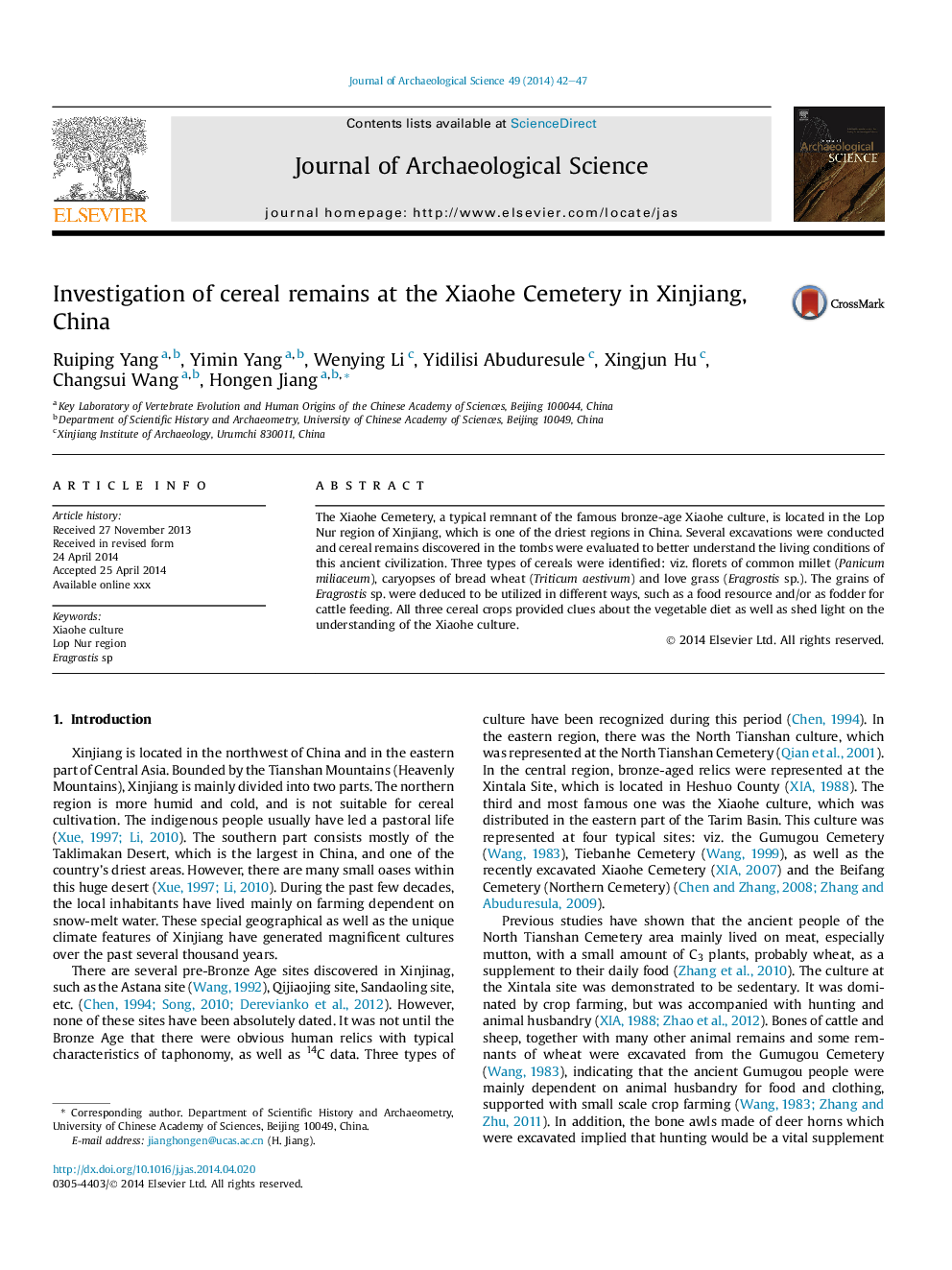| Article ID | Journal | Published Year | Pages | File Type |
|---|---|---|---|---|
| 7442895 | Journal of Archaeological Science | 2014 | 6 Pages |
Abstract
The Xiaohe Cemetery, a typical remnant of the famous bronze-age Xiaohe culture, is located in the Lop Nur region of Xinjiang, which is one of the driest regions in China. Several excavations were conducted and cereal remains discovered in the tombs were evaluated to better understand the living conditions of this ancient civilization. Three types of cereals were identified: viz. florets of common millet (Panicum miliaceum), caryopses of bread wheat (Triticum aestivum) and love grass (Eragrostis sp.). The grains of Eragrostis sp. were deduced to be utilized in different ways, such as a food resource and/or as fodder for cattle feeding. All three cereal crops provided clues about the vegetable diet as well as shed light on the understanding of the Xiaohe culture.
Related Topics
Physical Sciences and Engineering
Materials Science
Materials Science (General)
Authors
Ruiping Yang, Yimin Yang, Wenying Li, Yidilisi Abuduresule, Xingjun Hu, Changsui Wang, Hongen Jiang,
